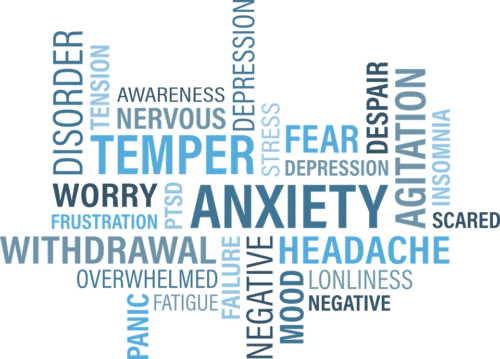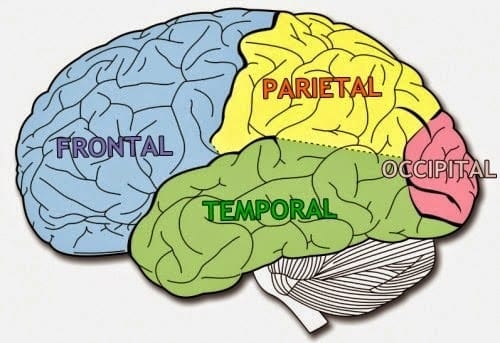What Parents and Educators Can Learn From Adults with Dyslexia
By Don Winn
 I never wanted to be a writer. If someone had told my young self that I would become a writer one day, I would have laughed—or thrown up—or run away. The idea of becoming a writer never even crossed my mind.
I never wanted to be a writer. If someone had told my young self that I would become a writer one day, I would have laughed—or thrown up—or run away. The idea of becoming a writer never even crossed my mind.
As a kid, reading and writing were torture. I hated them both. After being diagnosed with dyslexia in first grade, the intervention I received helped me to cobble together some rudimentary reading skills, but then I was placed back on the educational assembly line and fell further behind year after year. This had a devastating effect on how I viewed myself.
Dyslexia affects a person beyond reading and writing. It creates a social and emotional toll—lingering feelings of shame, brokenness, inadequacy, and a lack of belonging, which can prevent a dyslexic person from reaching his or her potential, or even recognizing that they have any potential.
 This is hard enough to deal with if you know you are dyslexic. But imagine the difficulties that undiagnosed dyslexics face, dealing with the social, emotional, educational and professional complications of dyslexia every day of their lives, but never knowing the reason why.
This is hard enough to deal with if you know you are dyslexic. But imagine the difficulties that undiagnosed dyslexics face, dealing with the social, emotional, educational and professional complications of dyslexia every day of their lives, but never knowing the reason why.
There are millions of undiagnosed dyslexic adults today—an estimated one out of ten people! This vast multitude often suffers silent shame and fights feelings of being a fraud, living in constant fear of being ‘found out.’ Many come up with creative ways to cover inadequacies in the workplace, feeling ever more inauthentic with every excuse, while negative self-beliefs limit personal growth. Readers may identify with the following:
- Hiding:being afraid of rejection or losing a job because of dyslexia
- Shame:not understanding the nature and scope of dyslexia and feeling broken or less worthy than others as a result
- Anxiety:constantly struggling to find the extra time needed to plod through work assignments in a world that demands instant results
- Self-loathing:negatively comparing yourself to others who seem to do things effortlessly
- Resignation:believing it’s too late to improve reading comprehension and writing, believing you’ll always be an underachiever
 So if you know—or suspect—you are dyslexic, how can you make the most of your reality, discover your genuine potential, and have your own best life? Try the following suggestions:
So if you know—or suspect—you are dyslexic, how can you make the most of your reality, discover your genuine potential, and have your own best life? Try the following suggestions:
- Get informed.Often adults don’t truly understand their experience until a child or grandchild is diagnosed with dyslexia. As they listen to the specifics of the diagnosis, they recognize themselves. Two excellent online resources to learn more about dyslexia are the Yale Center for Dyslexia and Creativity and the International Dyslexia Foundation. Viewing documentaries such as The Big Picture: Rethinking Dyslexia can also be helpful.
- Develop understanding.Realize that you are part of a group. Other dyslexic people have lived through complex life experiences similar to yours in some way. Take advantage of their experiences, cultivate patience with yourself, and learn some new coping skills. Share your new knowledge about dyslexia with friends, family, and workmates. This lays the foundation for self-compassion and honesty. Maybe you never knew that dyslexia is a decoding problem, or that reading will never become automatic for dyslexics? That sequencing issues explain why people with dyslexia might have a poor sense of direction or be challenged to remember more than one step at a time? Knowing these things about yourself and sharing them with others makes a huge difference.
- Question and replace old beliefs.Tackle negative feelings and redirect them with your new-found knowledge. Realize that most dyslexics are hard-working, tenacious, creative, outside-the-box thinkers. This will help you redefine your relationship with yourself, one belief at a time. Understanding that dyslexia is a lifelong processing issue — not an intelligence problem or a motivational issue — resets your expectations of yourself and helps with planning. Recognizing that you will need extra time for tasks that require reading or writing and that allowing yourself this ‘grace period’ is the key to realizing your potential.
 What about dyslexic children? Early diagnosis and intervention are crucial from an educational standpoint: there’s a short window of time during which children learn to read, and after that point, children must be able to read with comprehension in order to continue learning. Indeed, literacy is key for a developing a healthy self-concept, learning practical life skills, and reaching optimal psycho-social milestones.
What about dyslexic children? Early diagnosis and intervention are crucial from an educational standpoint: there’s a short window of time during which children learn to read, and after that point, children must be able to read with comprehension in order to continue learning. Indeed, literacy is key for a developing a healthy self-concept, learning practical life skills, and reaching optimal psycho-social milestones.
Although some dyslexic students become adequate readers through traditional instruction, over 50 percent require specialized instruction to overcome reading or processing challenges. Dyslexics respond well to a multi-sensory approach that includes visual, auditory, kinesthetic, and tactile modalities. While traditional instruction centers on memorizing the alphabet and each letter’s individual sound, multi-sensory teaching methods allow children to gradually understand their particular learning styles and discover what lights up their brains. They discover what they are passionate about. Actually, these teaching strategies developed for dyslexics can benefit all beginning readers, not just the struggling ones.
However, there’s more to consider than just getting a child help with reading when it comes to early detection of dyslexia. The many adults who didn’t know they had dyslexia until they were well along in life, or those like myself — who knew they had dyslexia but didn’t understand its full implications across every aspect of their lives — might look back and lament “wasted” time when they could have done things differently or seen themselves and all their hard work in a more understanding, compassionate light. Early detection of dyslexia in children can prevent this kind of situation for kids and help them make the most of all their abilities, possibly even preventing them from developing excessively limiting self-beliefs.
 Kids with undiagnosed dyslexia are in a terrible situation — they have come to believe that regardless of what they do, they will not succeed. They see no light at the end of the tunnel; instead, their vision is filled with images of continued failure. This is why it’s so crucial for parents and educators to be alert to possible signs of learning challenges. Every child has potential, and the sooner interventions and accommodations are in place, the sooner the child’s vision for themselves can begin to include hope. As mentioned above in the tips for adult dyslexics, getting informed, developing understanding, and questioning and replacing inaccurate beliefs are key for helping dyslexic children as well.
Kids with undiagnosed dyslexia are in a terrible situation — they have come to believe that regardless of what they do, they will not succeed. They see no light at the end of the tunnel; instead, their vision is filled with images of continued failure. This is why it’s so crucial for parents and educators to be alert to possible signs of learning challenges. Every child has potential, and the sooner interventions and accommodations are in place, the sooner the child’s vision for themselves can begin to include hope. As mentioned above in the tips for adult dyslexics, getting informed, developing understanding, and questioning and replacing inaccurate beliefs are key for helping dyslexic children as well.
Are you concerned that your child might be dyslexic? Here are some potential signs of dyslexia for different age groups. If you see evidence of a few of them, consider getting your child tested.
If your preschooler has trouble identifying rhyming words, pronouncing words, calling things by the right names, following instructions with more than one step, or if they speak less or use fewer vocabulary words than their peers, screening for dyslexia is advisable. Delayed language development is often the first sign of dyslexia in preschoolers. Is there a history of reading or spelling difficulties in the parents or siblings? Dyslexia is highly heritable.
Kindergarteners and first graders with dyslexia could exhibit frustration with reading, complaining that it is too hard. (They are good at disappearing when it’s time to practice reading!) They often are unable to sound out even the simplest words, since they can’t easily connect a sound to its matching letter. Great problem solvers and guessers, they often supply their own narrative to an illustrated book based on the pictures. They may say kitty or kitten instead of cat, for example, even though the word cat is used in the story.
 Older children with dyslexia will be slow, reluctant readers. They avoid reading out loud whenever possible. They make wild guesses about unknown words since they have no strategy for sounding out new words. Longer, more complex words are frequently mispronounced. When asked a question, they take longer to reply, often using word whiskers such as “ummmm” to give themselves time to process. Learning things in sequence is challenging or impossible: timelines, phone numbers, multiplications tables, for example. Handwriting is messy, and most dyslexics print block letters rather than write cursive.
Older children with dyslexia will be slow, reluctant readers. They avoid reading out loud whenever possible. They make wild guesses about unknown words since they have no strategy for sounding out new words. Longer, more complex words are frequently mispronounced. When asked a question, they take longer to reply, often using word whiskers such as “ummmm” to give themselves time to process. Learning things in sequence is challenging or impossible: timelines, phone numbers, multiplications tables, for example. Handwriting is messy, and most dyslexics print block letters rather than write cursive.
Signs of low self-esteem and shame show up early for dyslexics. Children especially experience low self-esteem in situations in which they believe they are destined for failure. Thus, kids with learning problems feel most vulnerable in settings in which their learning difficulties are obvious and exposed, such as in the classroom. Low self-esteem can show up in a number of ways.
- Quitting or outright avoidance of difficult tasks
- Being disruptive or clowning
- Poor eye contact, slumping posture, and reluctance to talk or engage in conversation
- Impulsivity
- Becoming aggressive or bullying
- Negative self-talk: I’m stupid, I can’t do anything right
 When children with dyslexia understand what’s going on with their brains and are taught how to make things better, the difference in their outlook is astounding. Early detection and intervention is key to giving kids with dyslexia a good foundation in reading, but also a good foundation for developing coping skills that will give them hope and the ability to live up to their full potential.
When children with dyslexia understand what’s going on with their brains and are taught how to make things better, the difference in their outlook is astounding. Early detection and intervention is key to giving kids with dyslexia a good foundation in reading, but also a good foundation for developing coping skills that will give them hope and the ability to live up to their full potential.
Author
Further Reading
- Des Moines Register – Drake’s Adult Literacy Center focuses on the small things
- Casper Star Tribune – Wyoming prisons use unique education program to improve inmate literacy
- Bustle – Study: Learning To Read As An Adult Changes Your Brain In A Big Way


